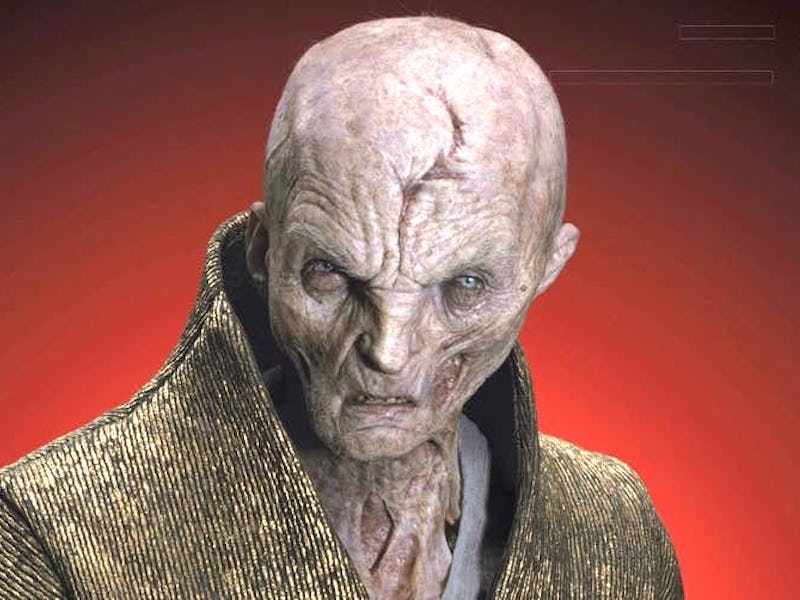Snoke's Fate Is the Best and Worst Thing About 'The Last Jedi'
Snoke was amazing thematically and made for a cool moment, but what was missing?

When Supreme Leader Snoke first appeared as a gigantic hologram looming above Kylo Ren and General Hux in The Force Awakens, fans thought they’d just met the series’s new big bad. The lead-up to the second film in the trilogy, The Last Jedi, was filled with people theorizing about who Snoke really was and what role he’d play going forward. Turns out, none of that theorizing really mattered, and The Last Jedi ended up being a wildly divisive movie. How the movie deals with Snoke could go a long way towards explaining why many fans felt that something about the film felt … off.
This post will spoil Star Wars: The Last Jedi, so be warned.
There’s a category of people who hated The Last Jedi that might never be swayed by any arguments about how brilliant it might be. These are, perhaps, the sort of people signing angry petitions asking Disney to strip the movie from Star Wars canon based on its shoddy treatment of Luke Skywalker. There are others who didn’t have an issue with the larger plot in that way but still didn’t quite love the movie. I’m in this category, and Kylo Ren’s unexpected killing of Snoke is perhaps the best example of why.
Make no mistake — it was awesome. Kylo’s delicate maneuvering of the lightsaber by Snoke’s side via the Force, Snoke’s fatal confidence, and just how unexpected it all was made for an amazing moment in a movie full of them (hell yeah, Vice Admiral Holdo’s hyperspace kamikaze). It was also a bold, admirable direction for the series as a whole.
Snoke as a character archetype was boring, because we’d seen him before. It was the Emperor and Vader, again. From his first appearance, it seemed like we all knew where this was going to go. Snoke would lurk, mostly in the shadows, Kylo would do his bidding, and then maybe in the third movie the apprentice would turn somewhat good and strike his master down. Instead, Kylo bisected Snoke and took his place as the leader of the First Order. This dynamic — the “apprentice” as the leader of the bad guys, perhaps before he’s ready — is one we’ve never seen before, and I’m excited to see how it plays out in Episode IX.
That doesn’t change that middle ground level of storytelling. Snoke worked as a set piece and as subversive storytelling. As a character, there’s nothing. I liked watching Snoke die, and I liked what it meant for Star Wars, but as a movie, it fell short.
Snoke had no backstory whatsoever, and as a result seemed to exist just so that he could die and set up the next stage of Kylo Ren. This isn’t satisfying, especially in a franchise that’s so steeped in history. Granted, in the original trilogy, we knew next to nothing about the Emperor. But, back then Star Wars was all new. The Last Jedi is the second entry in a new series of films that takes place a generation after the originals, and so much of the plot is driven by how the new characters relate to the old ones. The Last Jedi’s brilliance lies in discarding many of these ties (“Let the past die. Kill it, if you have to.”), but that only has emotional weight if we know what the past is.
How did Snoke get to be who he is? Also, who even was he on a more basic level? We might never know, and that could be just fine for Star Wars going forward, but the lack of detail within The Last Jedi makes him feel contrived and empty, despite the cool death and immense thematic importance.
The Last Jedi might be the most beautiful Star Wars movie, full of some truly incredible scenes, and it takes the franchise in an exciting new direction. The film just skipped over the work needed to link the micro and macro pictures in a fully fleshed-out film, and that disconnect (like the one between Snoke’s upper and lower halves) matters.